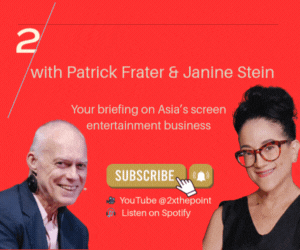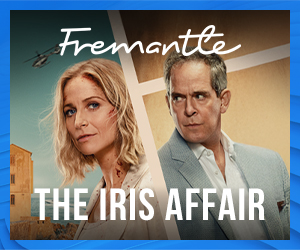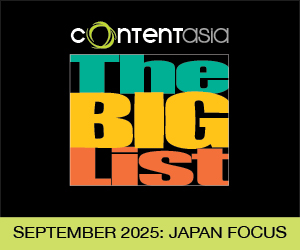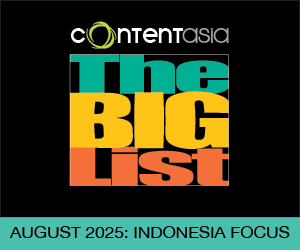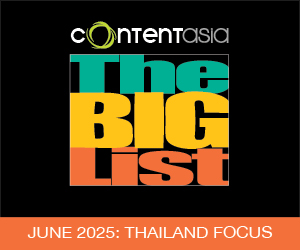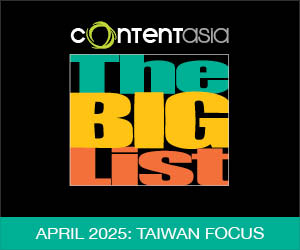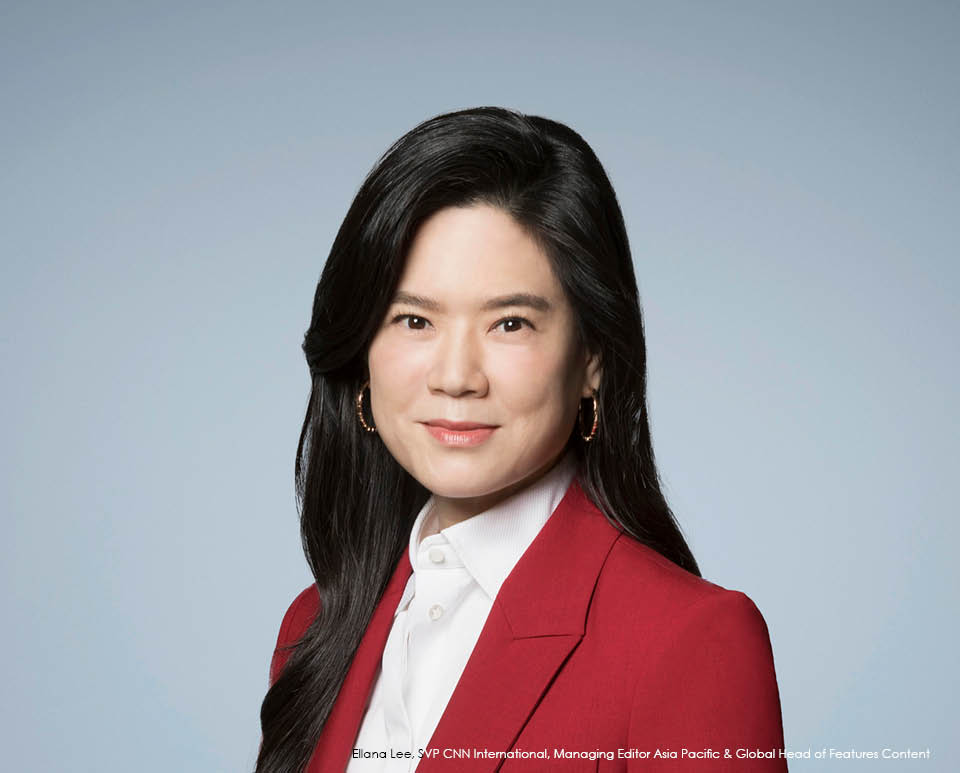
CNN’s Ellana Lee celebrates her 25th anniversary at the global news network this year. Vanita Kohli-Khandekar spoke to her about the milestone, a career journey that started in 1997 with hand-scrolling the teleprompter for news anchors, and using her position for the greater good.
It’s a Wednesday in August 2022. U.S. House Speaker Nancy Pelosi has become the most senior U.S. official to visit Taiwan in 25 years. China is livid, and launches military drills around the island. Taiwan scrambles fighter jets in response. CNN is running with headlines like “Pelosi lands in Taiwan amid high tensions with China”. Elsewhere in the region, ASEAN leaders warn generals in Myanmar not to hang any more political prisoners... or else; Japan, Australia, the U.S. and others join annual military combat exercises in Indonesia to support a free-and-open Indo-Pacific; and Covid has largely dropped into the background as a headline grabber, except perhaps, in Hong Kong, which is clinging to an unpopular hotel quarantine.
Against this regular day-in-the-life-of-a-newsroom scenario, “25 is just a number,” says Ellana Lee, CNN’s Asia Pacific managing editor, SVP CNN International and global head of features content, as she celebrates a milestone anniversary at the news network.
Over the past quarter century, Lee has become the face of CNN in Asia, leading regional and global initiatives out of the news network’s Hong Kong HQ, where she has been based since 2001.
ContentAsia’s Woman of the Year in 2018, Lee is a founding member of CNN’s International Diversity Council, sits on the board of the Young Global Leaders Foundation, and backs environmental, human rights and other causes via initiatives such as CNN Call To Earth Day and the CNN Freedom Project.
Lee says her evolution as a journalist over all these years ran alongside a personal journey. “Up to a point, I did what I was taught,” she says. In time, “thanks to my bosses and colleagues, I found myself in a position where I could create an identity and influence”.
Her involvement in the CNN Freedom Project, a movement developed by her one-time boss Tony Maddox to figh...
CNN’s Ellana Lee celebrates her 25th anniversary at the global news network this year. Vanita Kohli-Khandekar spoke to her about the milestone, a career journey that started in 1997 with hand-scrolling the teleprompter for news anchors, and using her position for the greater good.
It’s a Wednesday in August 2022. U.S. House Speaker Nancy Pelosi has become the most senior U.S. official to visit Taiwan in 25 years. China is livid, and launches military drills around the island. Taiwan scrambles fighter jets in response. CNN is running with headlines like “Pelosi lands in Taiwan amid high tensions with China”. Elsewhere in the region, ASEAN leaders warn generals in Myanmar not to hang any more political prisoners... or else; Japan, Australia, the U.S. and others join annual military combat exercises in Indonesia to support a free-and-open Indo-Pacific; and Covid has largely dropped into the background as a headline grabber, except perhaps, in Hong Kong, which is clinging to an unpopular hotel quarantine.
Against this regular day-in-the-life-of-a-newsroom scenario, “25 is just a number,” says Ellana Lee, CNN’s Asia Pacific managing editor, SVP CNN International and global head of features content, as she celebrates a milestone anniversary at the news network.
Over the past quarter century, Lee has become the face of CNN in Asia, leading regional and global initiatives out of the news network’s Hong Kong HQ, where she has been based since 2001.
ContentAsia’s Woman of the Year in 2018, Lee is a founding member of CNN’s International Diversity Council, sits on the board of the Young Global Leaders Foundation, and backs environmental, human rights and other causes via initiatives such as CNN Call To Earth Day and the CNN Freedom Project.
Lee says her evolution as a journalist over all these years ran alongside a personal journey. “Up to a point, I did what I was taught,” she says. In time, “thanks to my bosses and colleagues, I found myself in a position where I could create an identity and influence”.
Her involvement in the CNN Freedom Project, a movement developed by her one-time boss Tony Maddox to fight modern slavery, is part of that journey. The project produces original reports, articles and documentaries on human trafficking in all its forms – from debt bondage in India to sex trafficking rings in Southern California and African slaves in the Sinai desert. Since its launch in 2011, the project, has generated more than 1,000 investigative stories of modern-day slavery across five continents and is among CNN International’s most successful programming initiatives.
“If we really want to make a difference we must go from awareness to action,” Lee says, adding that the most effective action involves the next generation. “We can talk to adults about how bad slavery is, but these kids are ones that will go into C-Suites and will decide to pay X money for factory A or B. Factory B may be more expensive but it is going to have proper procedures, make sure they don’t use young girls in the factories. And I believe we can have that conversation with them at a younger age and make a difference.”
How would you describe the past 25 years? “Twenty five is just a number. It seems like we were kids when we had just started, I can’t believe how far and how fast we have come. When I started from New York and came to Hong Kong, I had no intention of staying here for this long. But as a journalist you want to be where the news is. Every time there was an opportunity to go back to the Western world, something was happening here.”
What’s your view of the current state of journalism... “As an intern I started off by photocopying and then scrolling the teleprompter by hand for anchors. It was the most nerve-wracking job on the planet because you had to keep pace with the speed at which the anchor was talking [or] you got yelled at or the producer would give you the eye. That is the world I came from. Everything from there onwards has been an improvement. Whether I look at journalism or the technology. There are ups and downs, we have faced the Googles and algorithms of the world. But you are not a journalist because you have a phone and can type. It is a craft that needs you to give context to the events of the world. And we have been under attack. The business side of journalism is exceptionally pressured. You need to be able to be profitable to spend the kind of money we do. When there is a natural disaster, a war, we have to be there. It is not a cheap business and we are able to be profitable because of the quality of journalism. It is not the other way around. Those who embrace change and move forward will survive and those who don’t, won’t. I am part of an organisation that is constantly pushing forward. We may not always make the right decisions, but we are always moving forward, that is what CNN is.”
Journalism is under threat in various parts of the world... and one of the things that allays that threat is good owners... what role do you think CNN plays in a world like this? “CNN has a history of over 40 years. It all goes back to purpose. (Ted) Turner created this company for a purpose. Why should you wait till 6pm for news, why not have it for 24 hours. He found there was an audience for that. Then it went global because he realised that news can criss-cross borders. That came from a trip he made to Cuba and found they were pirating the signal and watching news from the U.S. It is ingrained that media plays an important role in countries that have that foundation and respect for journalism... but it is not always not smooth sailing. Colleagues in the U.S. felt the difference physically in the Trump years. They were not welcome in some regions.”
Your three big professional epiphanies... “The first was when I was burnt out four years into CNN. I was young, dedicated and singularly focused in the United States. At some point my father went through a health scare and I was 16 hours away from my family in South Korea. CNN offered me a three-month sabbatical. It helped me unplug from the intensity of work and I was able to see the landscape. And I decided to hand in my resignation. My boss convinced me to move to Hong Kong for two years and then come to New York. That is what I did. Thankfully there were angels who didn’t quit on me, even though I had.”
“The second one was the (2017) special report on North Korea. The amount of work, emotional energy it involved... We had an amazing team, which went inside and met North Koreans. If you are outside of North Korea, you only see it in the context of the political rhetoric. When you are inside, you can step away from the rhetoric and see the citizens. The most important thing for them is the protection of the family, children. As an Asian, female, journalist, working for a western company my main job is to contextualise the outside world. You realise the country is on sanctions, not the people.
“The third is not a pivotal moment, but a big role I play is supporting reporters and producers who cover the region. I enjoy building this team.”
What changes do you think journalism has seen because of digital and how has that changed you? “I don’t think of myself as TV Ellana and the digital Ellana. There was a major story that did change that for me and that was the Sichuan earthquake (2008). We all found out about the Sichuan earthquake not from the newspapers, TV or government announcement. We found it on a small platform we had never heard of, called Twitter. That is when I felt the digital world. We were one of the first news websites on earth, no one has our reach. At a moment in time we saw digital as competition and then realised this isn’t either/or. For us as a cable organisation this is another step in our evolution. I took on the global features unit three years ago and we did some huge restructuring. It is now one organisation that is truly multiplatform. We had to go through years of training. You realise that the specialities that make you a top-notch journalist don’t change, but the platform helps you connect to different types of audiences and engage with them.”
Published in ContentAsia September 2022 magazine













